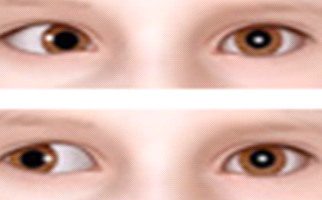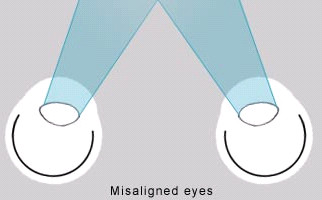Strabismus
What exactly is strabismus and which are its main causes?
The ophthalmic condition, in which the two eyes are not ‘parallel’, more specifically when one eye focuses on one direction while the other deflects / aberrates (not focusing at the same point), is called strabismus (crossed eyes). Strabismus main causes are heredity, a number of brain conditions and some systemic diseases (diabetes, thyroid). Strabismus becomes perceivable even from the first year of life, but it is likely to occur in adults, usually after an illness (e.g. double vision) or injury. Apart from the fact that the perception depth ability of a strabismic eye gradually disappears, the condition is also characterized cosmetic – aesthetic.
Types of strabismus:
- Esotropia (convergent strabismus): when one eye turns inwards
- Exotropia (divergent strabismus) when one eye turns outwards
- Hypertropia: when one eye turns upwards
- Hypotropia: when one eye turns downwards
- Cyclic torsional strabismus: when the eye performs cyclotorsional movements inwardly or outwardly
- Tropia (manifest eye deviation from the normal position) and Phoria (latent eye deviation from the normal position)
- Constant / intermittent strabismus
- Coherent / non-coherent strabismus
- Contralateral / Ipsilateral squint
- Paralytic strabismus
Treatment:
By taking into consideration patient’s age and type of strabismus, the possible solutions are: spectacles, special prismatic lenses and the common eye coverage technique. Definitely there are cases where the combination of the already mentioned solutions is recommended. Nevertheless, the main treatment type of strabismus is surgical procedure. The vast majority of patients suffering from strabismus only need a single treatment. The procedure takes place at the oculomotor muscles which are located outside the eye.















